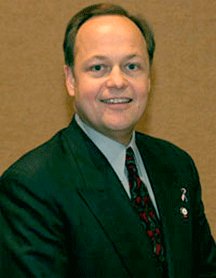When he takes office this month, incoming AOA president, Peter Kehoe, O.D., of
Peter Kehoe, O.D.
Legislation. Dr. Kehoe hopes to achieve passage of several bills, including the Vision Care for Kids Act, which is pending in the U.S. Senate, and the National Health Service Corps Act. Theyre both critical issues, he says.

The Vision Care for Kids Act calls for the federal government to provide grants to strengthen state efforts to provide comprehensive eye exams for children identified as having a potential vision disorder. The National Health Service Corps Act would allow optometrists to reduce up to $50,000 of student debt by working for two years at a community health center.
Another high priority: passage of the Optometric Equity in Medicaid Act (HR 1983), which seeks to close a loophole that can restrict access to eye care services, and specifically recognizes that optometrists are fully able to provide medical eye care services to Medicaid patients.
[Our office in] Washington, D.C. has to keep a pulse on all the changes were going to have in health care, make sure that optometry is equal in all of the discussions, and ensure that optometrists are able to participate in whatever new health plans are out there in the future, Dr. Kehoe says.
Membership. The AOA currently represents about 63% of all practicing optometrists. The association hopes to increase that number to 65% by June 2009 and to 95% by 2020. For the coming year, Dr. Kehoe hopes to better communicate with the AOAs membership what it is that we do for them every day.
Affiliate relationships, namely with the state associations, the Armed Forces Optometric Society and the American Optometric Student Association. Were constantly looking for ways to partner with our affiliates to not only improve the services, but also to make sure that theres that strong bond needed at the state level as well as at the AOA," Dr. Kehoe says.
Public health also ranks high on Dr. Kehoes agenda. Were looking forward to our first project out of the National Commission on Vision and Health, he says. The commissions goal is to improve the nations visual health by collaborating with experts in science and health and to assure that the role of optometry and vision care is integrated into public health programs at the national, state and local levels.
Also, he would like to recruit move providers for the InfantSee program, compile additional data about exam findings and recruit more industry partners. Some 8,000 optometrists currently participate in InfantSee, performing about 250,000 exams a year.
Board certification also will occupy Dr. Kehoes time this coming year. In 2007, the AOA formed a project team of representatives from the AOA and five other optometric organizations to devise a board certification process for optometrists. We are going to continue to do webinars to continue to look at ways to get the message out about 1) the need, and then 2) the specifics as they develop, he says.

